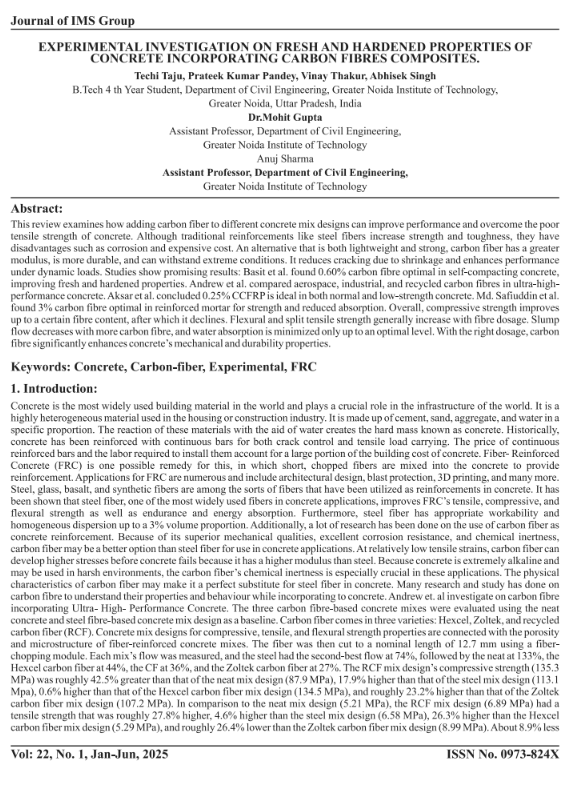EXPERIMENTAL INVESTIGATION ON FRESH AND HARDENED PROPERTIES OF CONCRETE INCORPORATING CARBON FIBRES COMPOSITES
Keywords:
Concrete, Carbon-fiber, Experimental, FRCAbstract
This review examines how adding carbon fiber to different concrete mix designs can improve performance and overcome the poor tensile strength of concrete. Although traditional reinforcements like steel fibers increase strength and toughness, they have disadvantages such as corrosion and expensive cost. An alternative that is both lightweight and strong, carbon fiber has a greater modulus, is more durable, and can withstand extreme conditions. It reduces cracking due to shrinkage and enhances performance under dynamic loads. Studies show promising results: Basit et al. found 0.60% carbon fibre optimal in self-compacting concrete, improving fresh and hardened properties. Andrew et al. compared aerospace, industrial, and recycled carbon fibres in ultra-high- performance concrete. Aksar et al. concluded 0.25% CCFRP is ideal in both normal and low-strength concrete. Md. Safiuddin et al. found 3% carbon fibre optimal in reinforced mortar for strength and reduced absorption. Overall, compressive strength improves up to a certain fibre content, after which it declines. Flexural and split tensile strength generally increase with fibre dosage. Slump flow decreases with more carbon fibre, and water absorption is minimized only up to an optimal level. With the right dosage, carbon fibre significantly enhances concrete's mechanical and durability properties



